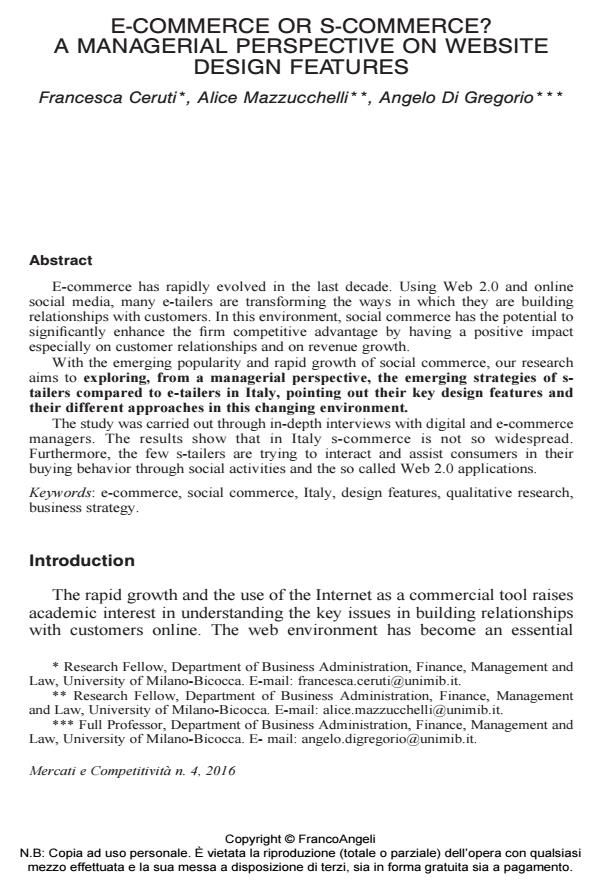E-commerce or s-commerce? A managerial perspective on website design features
Journal title MERCATI & COMPETITIVITÀ
Author/s Francesca Ceruti, Alice Mazzucchelli, Angelo Di Gregorio
Publishing Year 2016 Issue 2016/4
Language English Pages 21 P. 153-173 File size 136 KB
DOI 10.3280/MC2016-004009
DOI is like a bar code for intellectual property: to have more infomation
click here
Below, you can see the article first page
If you want to buy this article in PDF format, you can do it, following the instructions to buy download credits

FrancoAngeli is member of Publishers International Linking Association, Inc (PILA), a not-for-profit association which run the CrossRef service enabling links to and from online scholarly content.
Keywords: E-commerce, social commerce, Italy, design features, qualitative research, business strategy
Francesca Ceruti, Alice Mazzucchelli, Angelo Di Gregorio, E-commerce or s-commerce? A managerial perspective on website design features in "MERCATI & COMPETITIVITÀ" 4/2016, pp 153-173, DOI: 10.3280/MC2016-004009